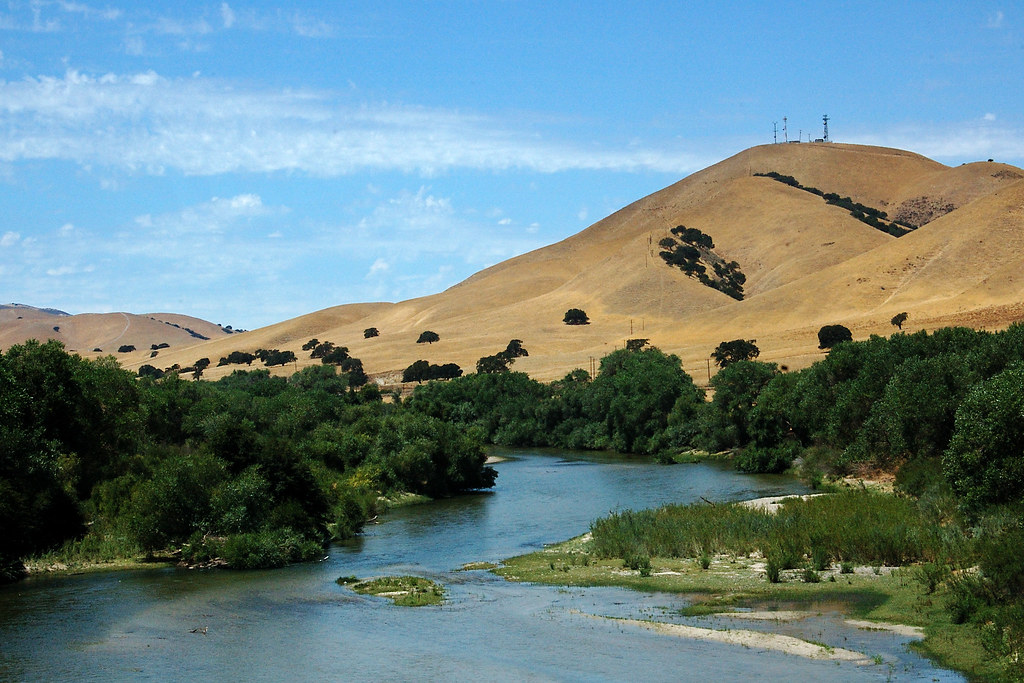The Salinas River is one of the most important rivers in Southern California, United States. Formed millions of years ago, the it gives this land a valuable resource and is also an attractive tourist destination. In this article, we will explore the Salinas River watershed, its characteristics, the wildlife that lives there, as well as threats to the it and how to protect its source. this valuable resource.
Salinas River Basin
The Salinas River is approximately 140 miles long and is part of the Salinas-San Joaquin River system. The river’s origins begin in the Santa Lucia Mountains in southeastern California and flow through Monterey, San Luis Obispo and Fresno counties before emptying into the Pacific Ocean at Monterey Bay. The it basin covers a large area, including valleys and hills, along with areas of pine and oak forests.
Characteristics of the Salinas River
The Salinas River has a gentle slope and flows slowly, forming a network of small rivers and lakes. The water in the river is supplied from underground sources and springs from the Santa Lucia Mountains. The it is also one of the only rivers in California that does not dry up completely in the summer, thanks to the supply of water from reservoirs and dams on the river.
A special thing about the it is the diversity of rock types in the river bed. These rock types include limestone, graystone and granite, creating a diverse and beautiful landscape.
Dam on the it
To control the amount of water in the Salinas River, many dams have been built on the river. San Antonio Dam, Nacimiento Dam and Santa Margarita Dam are the three largest dams on the it. These dams not only help control water levels but also create important water reservoirs for the surrounding land.
San Antonio Dam
The San Antonio Dam is the largest dam on the Salinas River, built in 1963. The dam is about 200 feet high and about 1.2 miles long, creating a large reservoir with a capacity of up to 350,000 acre-feet . This reservoir supplies water to the surrounding agricultural areas and is also a popular tourist destination for activities such as fishing, kayaking and camping.
Đập Birth
Nacimiento Dam was built in 1957 and is approximately 210 feet tall. This dam creates a reservoir with a capacity of up to 377,000 acre-feet, providing water to surrounding agricultural and residential areas. This reservoir is also home to many species of wildlife, including salmon and seahorses.
Santa Margarita Dam
Santa Margarita Dam was built in 1941 and is approximately 150 feet tall. This dam creates a reservoir with a capacity of up to 23,000 acre-feet, providing water to surrounding agricultural and residential areas. This reservoir is also home to many species of birds and wildlife, including red deer and black bears.
Wildlife in the Salinas River
The Salinas River is an ideal habitat for many species of wildlife. With pine and oak forests, along with rivers and lakes, the it is home to many species of birds, animals and insects.
Bird
The Salinas River is home to many species of birds, including herons and kestrels. These birds are often found in pine and oak forest areas, where they can find food and nest. In addition, the it is also home to migratory birds such as pigeons and swallows.
Animal
The Salinas River is also habitat for many species of wildlife, including red deer, black bears, salmon and seahorses. These animals are often found in pine and oak forest areas, where they can find food and shelter. In addition, the it is also home to many small animals such as squirrels, mice and rabbits.
Insect
The rivers and lakes in the Salinas River basin provide an ideal habitat for many insect species. These insects are not only an important food source for birds and other wildlife, but also play an important role in maintaining the ecological balance of the area.
Water quality of the it
The water quality of the Salinas River has a major impact on the animal and plant life in the area. However, due to the influence of human activities, the water quality of the Salinas River is facing many problems.
One of the main problems is water pollution by chemicals from farms and industrial areas around the river. These substances can harm the health of animals and can also affect the quality of drinking water for humans. Additionally, the exploitation of natural resources in the area may also cause deterioration of the water quality of the it.
History of the it
The Salinas River has existed for millions of years and has seen many changes throughout its history. Before Americans began exploiting the region’s resources, the it was an important source of life for indigenous peoples, including the Chumash and Salinan tribes. These tribes used the river’s water to grow crops and raise animals, as well as as an important source of food.
During the 19th century, gold miners found gold in the Salinas River bed, leading to a heated gold mining race. However, gold mining has caused a decline in river water quality and affected the habitat of animals and plants.
Uses the water of the Salinas River
The water of the Salinas River is used for a variety of purposes, including providing water to agricultural and residential areas, power generation, and tourism. The river’s water is also used for irrigation and growing crops such as crops and fruit trees.
However, water use of the it needs to be controlled and managed in a sustainable manner to ensure a balance between uses and protect this valuable resource.
Threats to the it
The Salinas River faces many threats, especially from human influence. Exploitation of natural resources in the area, unsustainable water use, and environmental pollution can all have negative impacts on the it and the species that live in it.
One of the biggest threats to the it is unsustainable water use. Due to the increasing demand for water, the water of the Salinas River is being depleted and is at risk of not being enough to meet the needs of humans and animals.
In addition, the exploitation of natural resources in the area can also cause water quality deterioration and ecological imbalance. Mining gold and other minerals can cause environmental pollution and affect the life of animals and plants in the area.
Protect the Salinas River
To protect the Salinas River and its precious resources, we need sustainable protection and management measures. One of the important measures is to control water use and ensure that river water is used in a sustainable and efficient manner.
It is also important to educate and increase awareness about the importance of the it. We need to work together to protect and conserve this precious resource to ensure the survival of animal and plant species in the region and also to leave a legacy for future generations.
Conclude
The Salinas River is a wonderful space in Southern California, bringing us sublime emotions and connection to nature. However, the it also faces many threats and needs to be protected and managed in a sustainable manner. Let’s work together to protect the Salinas River and respect this precious resource to leave a legacy for future generations.




